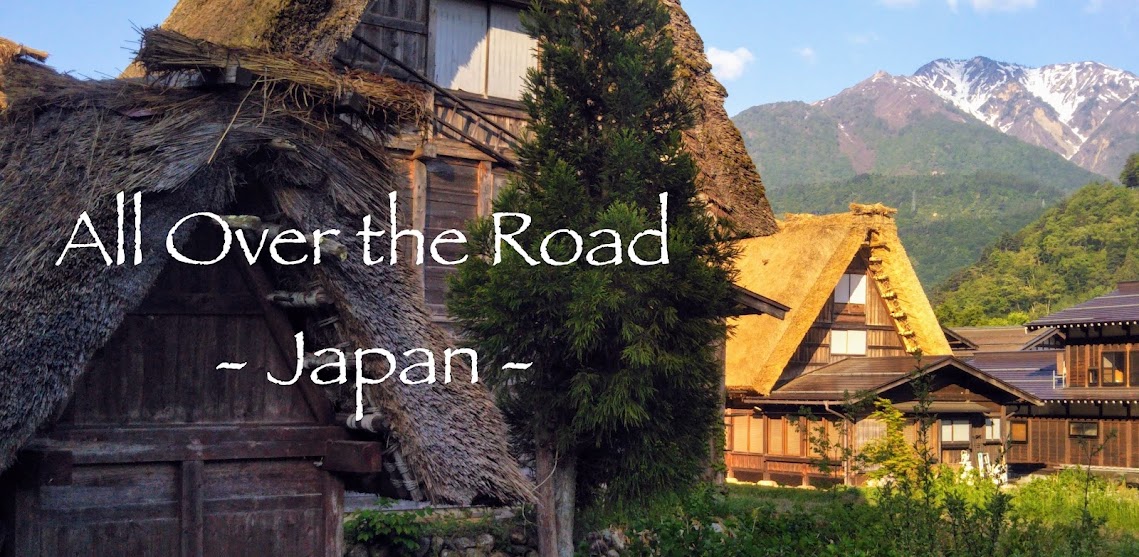After a week in Fukushima I had finally gotten back out on my bike. Her tubes still held air, despite sitting in a shed since last September. Her front derailleur was still stuck; I’d meant to work on loosening her up last summer but, as often happens with things, I never got around to it. The worn back tire was a different matter; if I was going to get any riding in during my time here I couldn’t ignore it much longer. I always let my tires wear down further than I should before I replace them. So far I’ve avoided major catastrophe.
Ishida-san was manning his bike shop alone, of course. His look when I walked in was one of delayed confusion. Wasn’t I supposed to be gone by now? Had I left and come back? Misunderstandings are the common by-product of my middling Japanese. I picked out a new tire (‘That’s a good one, lasts a long time,’ Ishida-san said, just like every other time I’ve ever bought a tire from him) and I rode across town to find a present for my niece and her fiancee. I wouldn’t be able to make their wedding in Florida; this would be a sort of first for me, since I usually take any opportunity to travel.
Further toward the north side of town I found, after ten minutes and twenty-two side streets, the hair salon where I was to meet my wife. I was late. My wife would be later. I rolled to the convenience store at the end of the block to pick up drinks for my sons. On the magazine rack I saw the faces of the same celebrities so popular a year ago – in typical fashion, Japan loves new things brought to them by the same old people.
The woman at the hair salon – a personal friend of my wife’s, who I had met once before – asked about the new baby and living in the States and how long we’d be in Fukushima. I asked her mainly about her salon, as I couldn’t remember anything else about her, if I had ever known. Business was good, she said. Better now than it was in her first year, before the earthquake. ‘So people are…around? Like before?’ And still getting haircuts?
‘Yes,’ she said. ‘Life is back to normal.’
And, I guess, on the surface it is.
Here in Fukushima City at least (unlike over on the coast, where too many people will never know normal again), the effects of the last year have to a degree been erased. Cracks and dips and sinkholes in the roads have been filled in and smoothed over. Tile rooftops have been repaired. In the earlier meantime disruptions in routine were mitigated then managed away: the electricity, then the water came back. Lines at the gas stations disappeared. Store shelves returned to capacity. Before long the kids went back to school – though they were forced to spend the sweltering summer months behind closed classroom windows until the radioactive dust settled and the tainted topsoil could be removed from the playground.
Three months after escaping a perceived litany of horrors stemming from the explosions at the nuclear power plants last March, my family and I returned to Fukushima – and the unavoidable sense that, despite having at our disposal all the things we’d enjoyed before, life had indeed changed in this town. On the news, weather forecasts now came with expected fluctuations in radiation levels. On the radio the latest readings in specific spots around the city were recited as gentle instrumentals played in the background. Millisievert became a household word – though few seemed to know exactly what a millisievert was.
A year later these subtle reminders of March 11, 2011 remain.
I took my sons to a school festival today, a typical display of kids’ games and paper cut-out decorations and snow cones. The kids were dressed up in their matsuri garb – the girls in bright-colored yukata, the boys in jimbei of more subdued tones. They fished for water balloons and spilled their popcorn on the ground while the parents hung in there, begging the sun to hurry up and fall toward that cooling mountain horizon.
This evening there were fireworks down where the Abukumagawa and the Matsukawa Rivers converge. On the wide sandy banks the concomitant summer festival went on as it has every year for the past twenty-eight. People in cars inched through the heavy traffic. Mostly teenagers wound between and past them on bicycles. The sidewalks were crawling with a broad community trying to be just that. On the nearby grounds of one of Fukushima’s many high schools, a solar-powered, pole-mounted device showed in crimson digits the present radiation levels on that spot.
Perhaps things have returned to normal here.
Just now, a constant awareness of the things on the ground and in the air, and the appropriate precautions they demand, are a part of normal here in Fukushima City.
